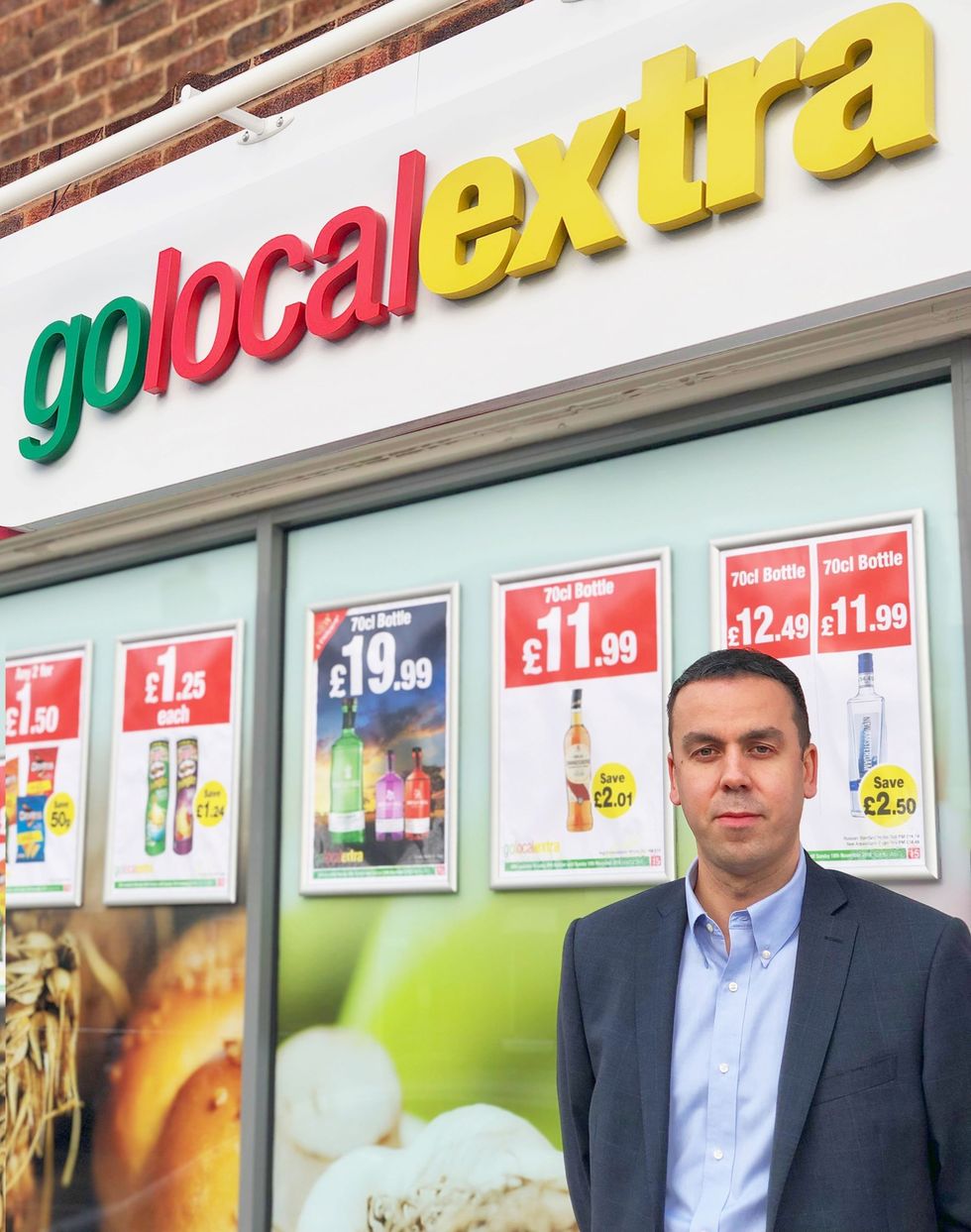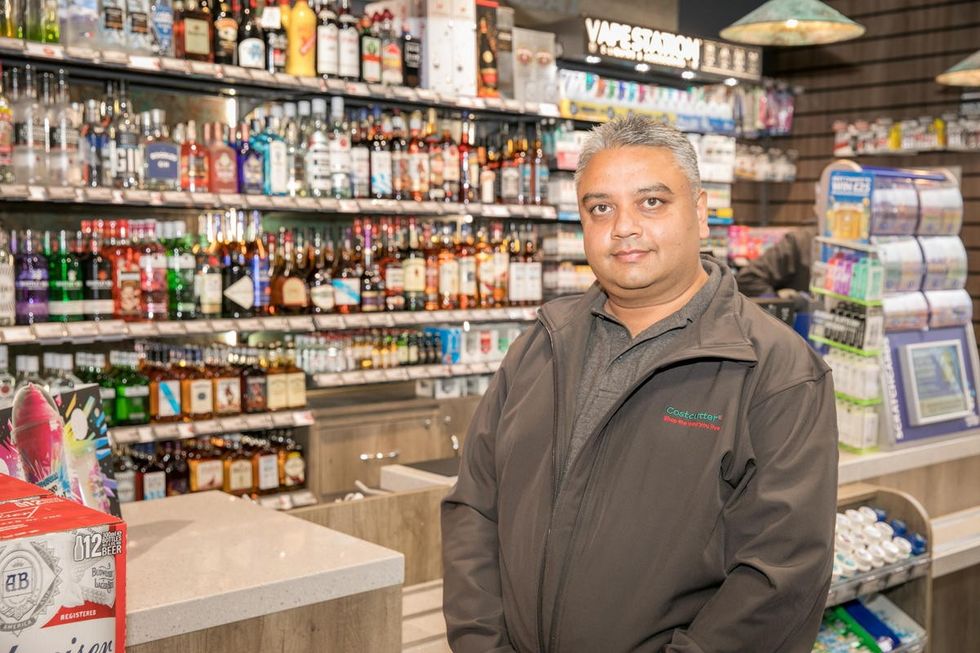Despite being regarded as the community’s lifeline, the convenience retail sector is sadly facing a consistent decline in sales. Yet, as Asian Trader reports, the tide can still be turned if retailers embrace smarter strategies, leverage technology, and remain attuned to shifting consumer demands.
Recent data from Kantar paints a stark picture. Over the past year, symbols, independents, and even the Co-op have seen their market share erode, with year-on-year sales plummeting by 5.8 per cent by January 2024. This stands in sharp contrast to the steady or rising trends observed in supermarkets like Tesco and Aldi.
The findings are corroborated by Talysis and TWC, both specialists in the UK convenience market.
Talysis’ CD:UK, an analysis based on over 13,000 stores, including 1,600 forecourts, showsthat over the last twelve months, symbols and independents’ moving annual total (MAT) has slipped by 0.61 per cent.
Ed Roberts, MD of Talysis Ltd, shares with Asian Trader, “The downward trend is even more noticeable in the latest four weeks (-2.42 per cent) and 12 weeks (-3.12 per cent), which indicates the decline has started to 'set in' more recently.”
The Christmas period, traditionally a boon for retailers, was “particularly disappointing” for the convenience sector, Roberts adds.
TWC’s SmartView Convenience data, based on 5000+ independent convenience stores and reflective of the 30,000 independent c-stores in Great Britain, echoes similar sentiment. It also shows a “4.4 per cent” YoY decline in 52-week MAT performance to 29 December 2024.
Different data reports, analysis and methodologies, yet they all are revealing the same picture, that symbols and independents are losing ground.
What is happening?
To understand what is happening, Asian Trader got in touch with leading retailers, symbol groups and retail experts. It turns out that the decline is multifaceted, driven by both internal and external factors.
Tom Fender and Sarah Coleman from TWC attribute a significant part of the decline to the ongoing slump in tobacco sales over the past couple of years.

"There is a long-term decline in tobacco – minus 9 per cent value year on year," Fender and Coleman explain. "This could also have a significant negative impact on retailers’ cash flows."
Alcohol sales have also taken a hit in the convenience channel with beer, wine, and spirits all showing continued decline.
Surprisingly and contrary to market trends, sales of low and no alcohol line too continue to remain low in independent convenience stores.
"This is a missed opportunity,” say Fender and Coleman.
Further exacerbating the convenience channel’s challenges are supermarkets and discounters’ loyalty cards and data-led strategies.
“Supermarkets are cranking up promotions,” Fender and Coleman point out. “There has been a month-on-month increase in promotions for 16 consecutive months, with an average promotion discount of 22 per cent.”
Discounters like Aldi are becoming the new “community retailers” with their tight ranges, better prices and relatively easy to shop experience as compared to “40000 sq feet supermarkets”.
Roberts from Talysis echoes these concerns, particularly the slump in tobacco sales.
“If we remove tobacco from the equation, total convenience value is actually up by +1.55 per cent MAT and +0.48 per cent in the latest four weeks,” he explains, showing just how vital the category has been to overall performance.
Accounting for 34 per cent of total convenience sales, any drop in tobacco is more than likely to see a fall in overall performance, he adds.

In 2024, sales of tobacco (value) were down by -4.66 per cent (value) and 9.21 per cent (volume) year on year, representing a whopping “£300 million of revenue lost” to the sector.
Roberts adds, “The two biggest categories (tobacco and alcohol), which combined account for just over half of convenience value sales, are showing a decline – it’s no wonder that sales and market share in this sector are falling!”
In addition, what is emerging as a problematic aspect (surprisingly) is the sheer volume of SKUs in convenience stores.
“In the past twelve months, Talysis has seen over 6,000 different soft drinks SKUs and 8,000 alcohol SKUs selling in CD:UK. It’s fair to say that stocking and display decisions for symbols and independents can be a game changer,” Roberts adds.
Pete Patel, a seasoned retailer with 10 stores under the Costcutter and Bargain Booze banners, acknowledges the struggles facing some independent retailers though he maintains that his stores are able to buck the trend through timely investments.
"There are lots of factors, but the main factors I believe is competition, not only from supermarkets but also from online and quick commerce. In fact, it is the latter that is becoming more and more aggressive and has made things quite difficult and tricky,” Patel shares with Asian Trader.
Patel also senses a sense of uncertainty among the shoppers.
“People are tightening up. So, instead of shopping locally, they are going to the discounters more often,” he notes.
Symbol groups and wholesalers are bound to feel the impact of this downturn.
Guy Swindell from wholesale group Parfetts tells Asian Trader, “Parfetts has not explicitly identified a downward trend among Go Local retailers.
"However, there’s no doubt that the prolonged cost of living crisis and the rising cost of business are making trading difficult.”

Tailored support and promotions are crucial to ensuring independent retailers remain competitive, Swindell emphasises.
He highlights that “record numbers of retailers” are joining the Go Local symbol group, recognising the benefits of an employee-owned model that reinvests into pricing and retailer support.
What to do?
Desperate times call for desperate measures. This is exactly one of such times.
Retailer Patel strongly feels that it is time that convenience retailers let go a little portion of their margins and try to offer better prices.
Patel says, "A lot of independent retailers historically have always used higher margins. But now that people obviously are now financially struggling, you can't always get away with it, so you have got to look at your pricing and make sure that you are still competitive.
"Pricing is most important in the current climate. Even if yours is the only shop in the village, you can't still charge the margins that you used to charge five years ago because five years ago, quick online delivery wasn't so big.
“A good range of alcohol at better prices and a wide range of fresh produce also help in bringing footfall and increased baskets spend.
"Depending on the location and demographic, having a hot fresh food section also helps in increasing footfall and sales,” he says, though quickly adding that hike in wages is going to impact this section the most.

Agreeing with Patel’s beliefs on better pricing, data expert Fender and Coleman feel suppliers also should rethink their strategies over price marked packs for a better shared margin.
“Suppliers need to ask themselves whether the PMP price – or the PMP flash – triggers the shopper to purchase. If the latter is true, the PMP price could be raised – meaning higher shared margin and little or no decrease in sales,” suggests Fender.
Sharing the mantra for success, Fender encourages convenience retailers to focus on “five Fs- namely fresh products, full shelves, food to go, fast and friendly service and fit for purpose range”.
Offering home delivery is another key area that retailers need to focus on. Leading retailers like Atul Sodha, Natalie Lightfoot and Girish Jeeva vouch for home delivery service as their way forward to push numbers.
The latter has recently launched Scotland’s first “24-hour” delivery service and hopes to have a captive market soon.
Roberts from Talysis advises retailers to focus on key categories like soft drinks, crisps, and confectionery, which have shown growth.
“Whilst NPD can keep shoppers engaged and offer something different, it’s important to maintain a core range and ensure availability,” says Roberts, adding that retailers can use Talysiss Range Finder tool and NPD when it comes to new lines and top market sellers.
What can play a key role here is offering personalised service.
Swindell from Parfetts encourages retailers to understand and cater to local shoppers’ needs to build loyalty through personalised service, community support, and stock local products.
“Using Price Marked Packs (PMPs), targeted promotions, and selective price matching on key items can create an impression of value without cutting prices across the board. It’s why we’ve given 100 per cent of our own-label range PMP,” says Swindell.
A word of advice for independents and symbols from Tom Fender and Sarah Coleman from TWC:
Offer longer life sandwiches, coffee to go and more professional chilled ranges
Join a symbol group (if you are not already).
Listen to the advice from wholesalers.
Look at your store through the eyes of shoppers, who is walking in for the first time.
Analyse your data – learn what’s selling.
Keep on top of emerging trends.
Consider offering more services to drive footfall into your store.
Employ staff who go the extra mile· Introduce themes in your store regularly.
Embrace seasonal events – but get going early.
Wakeup call
Convenience retail industry guru Scott Annan does not like to mince his words when it comes to the mountain of problems facing the independents and symbols.
“Two major factors stand out in the decline; firstly, commercial revenue streams at wholesalers and symbols do not benefit independent retailers.
“Secondly, thousands of stores do not offer fresh, day-part food. They do not use basic retail tech and data to measure and adjust performance. They trade ‘blind’,” he says.

A passionate campaigner of “fresh and proprietary food”, Annan also vouches for Electronic Shelf Labels to have a better hold on business.
“Some retailers such as Henderson’s NI with their excellent tech and coffee programme, and Bestway with their recent work with Triple A Foodhall in Nuneaton are some of the bright spots.
“Some symbol groups are simply ‘pushing’ core grocery SKUs into independent stores that are not required, something that I have observed in hundreds of stores that I visited across the UK and in thousands more that others regularly communicate to me,” he says.
Unless corrective actions are not taken urgently, consistent decline in sales in convenience might put off consumer packaged goods suppliers who might “reduce or redirect their trade marketing support as the share cannot justify the spend”, warns Annan.
With additional overhead costs arising from the recent Budget and impending ban on disposable vapes (another fat-margin product), 2025 is seemingly going to be a challenging time.
Convenience retailers' body Association of Convenience Stores (ACS) Chris Noice shares with Asian Trader, “We are hearing that customers are becoming more price sensitive than they have been for a long time.“
With supermarkets introducing matched pricing with discounters, it will be very difficult for a lot of convenience stores to follow because it’s a different business model with different supply chains and economies of scale.”
However, Noice sees hope in policy changes, such as the introduction of a permanently lower business rates multiplier, which could provide much-needed stability.
Convenience stores can remain competitive by focusing on what sets them apart from the competition- atmosphere in the store, products that can’t be found anywhere else, and a range of services to make people’s lives easier, Noice adds.






